John McWhorter in the New York Times:
 Some time ago, I fell into conversation with a colleague about what we had been reading lately, and the person suggested that I absolutely must give Henry James’s “The Ambassadors” a try.
Some time ago, I fell into conversation with a colleague about what we had been reading lately, and the person suggested that I absolutely must give Henry James’s “The Ambassadors” a try.
The pandemic intervened, and I forgot the recommendation. But I remembered recently and picked up the novel. Frankly, despite my profound respect for the book, it was a bit of a slog. James’s writing, especially in his last few novels, is not exactly for the beach. His tapeworm sentences qualify as literary Cubism at best or obsessive obfuscation at worst. Even James once recommended reading only five pages of “The Ambassadors” at a time.
But I was struck repeatedly by the fact that, sentence structure aside, so much of the challenge posed by James’s prose is that words often had different meanings around the turn of the century than they do now. This quiet evolution of language is a facet that can be damnably hard to notice day to day, yet its importance is hard to overstate.
More here.

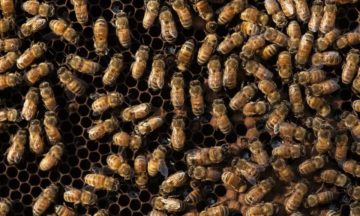 The US Department of Agriculture (USDA) has granted a conditional license for a vaccine created by Dalan Animal Health, a US biotech company, to help protect honeybees from American foulbrood disease.
The US Department of Agriculture (USDA) has granted a conditional license for a vaccine created by Dalan Animal Health, a US biotech company, to help protect honeybees from American foulbrood disease. German leaders’ vigorous efforts over the last year to better equip the Bundeswehr—and thus prove their commitment to the security of Europe—have been described as a dramatic turning point in postwar German history. Chancellor Olaf Scholz himself used such language last February to justify his pledge to take out an unprecedented €100 billion loan, which he referred to as a “special fund” for “necessary investments and armament projects.” Unwilling to leave any doubt about his commitment to strengthening the armed forces, Scholz announced that annual defense budget increases would follow. Speaking to parliament three days after the war began, Scholz justified this orgy of defense spending by arguing that the Russian invasion marked a “watershed in the history of our continent.” The claim must be understood in reference to the elephant in the German historical imagination: World War II. “Many of us,” the chancellor
German leaders’ vigorous efforts over the last year to better equip the Bundeswehr—and thus prove their commitment to the security of Europe—have been described as a dramatic turning point in postwar German history. Chancellor Olaf Scholz himself used such language last February to justify his pledge to take out an unprecedented €100 billion loan, which he referred to as a “special fund” for “necessary investments and armament projects.” Unwilling to leave any doubt about his commitment to strengthening the armed forces, Scholz announced that annual defense budget increases would follow. Speaking to parliament three days after the war began, Scholz justified this orgy of defense spending by arguing that the Russian invasion marked a “watershed in the history of our continent.” The claim must be understood in reference to the elephant in the German historical imagination: World War II. “Many of us,” the chancellor  Two-time Palme d’Or winner, Ruben Ostlund’s sadistic comedy Triangle of Sadness is a provocative and biting class satire of wealth and beauty privilege that plays out like a social psychology experiment. This ship-borne narrative offers a carnivalesque analysis of the ultra-rich wealth hoarders and beauty influencers and arrives at the apparent theme of the savagery of human nature. Structured into three parts, the film is held together by model couple Carl (Harris Dickinson) and Yaya (the late Charlbi Dean). Originally titled Sans filter, which translates to “Without Filter,” this film utilizes grotesque and scatological humor to lampoon social hierarchies and class divide induced by the capitalist society.
Two-time Palme d’Or winner, Ruben Ostlund’s sadistic comedy Triangle of Sadness is a provocative and biting class satire of wealth and beauty privilege that plays out like a social psychology experiment. This ship-borne narrative offers a carnivalesque analysis of the ultra-rich wealth hoarders and beauty influencers and arrives at the apparent theme of the savagery of human nature. Structured into three parts, the film is held together by model couple Carl (Harris Dickinson) and Yaya (the late Charlbi Dean). Originally titled Sans filter, which translates to “Without Filter,” this film utilizes grotesque and scatological humor to lampoon social hierarchies and class divide induced by the capitalist society.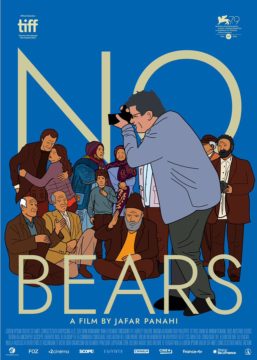 PANAHI IS A FILMMAKER
PANAHI IS A FILMMAKER In a 1947 article for this magazine, the essayist and historian Bernard DeVoto warned of the “forever-recurrent lust to liquidate the West.” “Almost invariably the first phase was a ‘rush,’ ” he wrote. “Those who participated were practically all Easterners whose sole desire was to wash out of Western soil as much wealth as they could and take it home.” For DeVoto, the New Deal offered a chance for more sustainable and locally beneficial uses of Western resources, but, in the end, Eastern capital was “able to direct much of this development in the old pattern.”
In a 1947 article for this magazine, the essayist and historian Bernard DeVoto warned of the “forever-recurrent lust to liquidate the West.” “Almost invariably the first phase was a ‘rush,’ ” he wrote. “Those who participated were practically all Easterners whose sole desire was to wash out of Western soil as much wealth as they could and take it home.” For DeVoto, the New Deal offered a chance for more sustainable and locally beneficial uses of Western resources, but, in the end, Eastern capital was “able to direct much of this development in the old pattern.”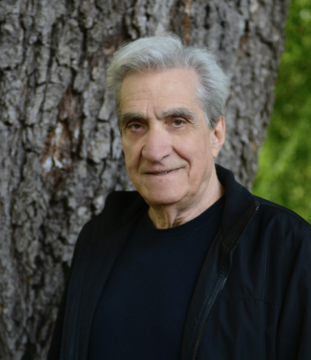
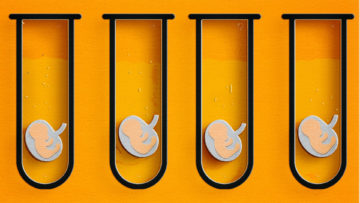 In August 2022, two research groups published papers in
In August 2022, two research groups published papers in 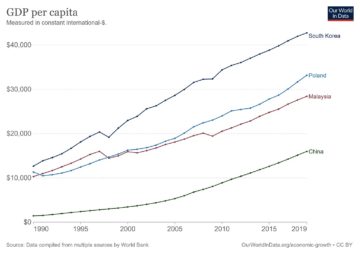 The generally acknowledged development champion of the modern world is South Korea. Joe Studwell, the author of
The generally acknowledged development champion of the modern world is South Korea. Joe Studwell, the author of  So who is Janelle Monáe? Since she emerged on the music scene, she’s been less a pop star than a world-builder, refracting herself through sci-fi and Afrofuturist imagery. Her first EP, “Metropolis: The Chase Suite,” from 2007, drew on Fritz Lang’s German Expressionist classic and cast Monáe as her android alter ego, Cindi Mayweather. With her tuxedos and protruding pompadours, she was a glam retro-futurist androgyne, and her three studio albums—“The ArchAndroid” (2010), “The Electric Lady” (2013), and “Dirty Computer” (2018)—leaned into her funk-robot persona. “I’m a cyber-girl without a face, a heart, or a mind,” she sang on one track. Monáe used Mayweather and other spinoff characters as metaphors for her sense of otherness, as a queer Black woman from Kansas City, Kansas. (In 2018, she came out as pansexual, and last April revealed herself to be nonbinary; she uses she/her or they/them pronouns but says that her preferred pronoun is “freeassmuthafucka.”) Monaé’s forty-eight-minute
So who is Janelle Monáe? Since she emerged on the music scene, she’s been less a pop star than a world-builder, refracting herself through sci-fi and Afrofuturist imagery. Her first EP, “Metropolis: The Chase Suite,” from 2007, drew on Fritz Lang’s German Expressionist classic and cast Monáe as her android alter ego, Cindi Mayweather. With her tuxedos and protruding pompadours, she was a glam retro-futurist androgyne, and her three studio albums—“The ArchAndroid” (2010), “The Electric Lady” (2013), and “Dirty Computer” (2018)—leaned into her funk-robot persona. “I’m a cyber-girl without a face, a heart, or a mind,” she sang on one track. Monáe used Mayweather and other spinoff characters as metaphors for her sense of otherness, as a queer Black woman from Kansas City, Kansas. (In 2018, she came out as pansexual, and last April revealed herself to be nonbinary; she uses she/her or they/them pronouns but says that her preferred pronoun is “freeassmuthafucka.”) Monaé’s forty-eight-minute  How does an Oxford academic follow up a prize-winning trade book, a newly researched biography of Geoffrey Chaucer? And, moreover, in lockdown, when archives and libraries are largely inaccessible? Marion Turner, the newly elected J R R Tolkien Professor of English Literature and Language at Oxford, has avoided ‘second-book syndrome’ with a breathtakingly simple idea: a biography of Chaucer’s most famous character, Dame Alison (or Alice), weaver, pilgrim, businesswoman and serial participant in the marriage market, better known as the Wife of Bath. Informative, clear-sighted, entertaining and as opinionated as its subject, Turner’s new book is a wonderful introduction to the lives of 14th-century women, The Canterbury Tales and the fascinating ways in which Alison has been read and misread since she first hoisted up her voluminous skirts to show her fine red stockings during the last decade of the 14th century.
How does an Oxford academic follow up a prize-winning trade book, a newly researched biography of Geoffrey Chaucer? And, moreover, in lockdown, when archives and libraries are largely inaccessible? Marion Turner, the newly elected J R R Tolkien Professor of English Literature and Language at Oxford, has avoided ‘second-book syndrome’ with a breathtakingly simple idea: a biography of Chaucer’s most famous character, Dame Alison (or Alice), weaver, pilgrim, businesswoman and serial participant in the marriage market, better known as the Wife of Bath. Informative, clear-sighted, entertaining and as opinionated as its subject, Turner’s new book is a wonderful introduction to the lives of 14th-century women, The Canterbury Tales and the fascinating ways in which Alison has been read and misread since she first hoisted up her voluminous skirts to show her fine red stockings during the last decade of the 14th century. Something was in the water in Austin. In the 1960s, a gang of classics scholars and philosophy professors had rolled into town like bandits, the University of Texas their saloon: William Arrowsmith, chair of the Classics Department, who scandalized the academic humanities with a Harper’s Magazine essay titled “The Shame of the Graduate Schools,” arguing that “the humanists have betrayed the humanities” and that “an alarmingly high proportion of what is published in classics—and in other fields—is simply rubbish or trivia”; John Silber, promoted to dean of the College of Arts and Sciences just ten years after graduating from Yale, who promptly replaced twenty-two department heads, much to the ire of the university’s board; and a third, an unassuming former radio broadcaster from the United Kingdom with a knack for classical languages and only a master’s degree to his name.
Something was in the water in Austin. In the 1960s, a gang of classics scholars and philosophy professors had rolled into town like bandits, the University of Texas their saloon: William Arrowsmith, chair of the Classics Department, who scandalized the academic humanities with a Harper’s Magazine essay titled “The Shame of the Graduate Schools,” arguing that “the humanists have betrayed the humanities” and that “an alarmingly high proportion of what is published in classics—and in other fields—is simply rubbish or trivia”; John Silber, promoted to dean of the College of Arts and Sciences just ten years after graduating from Yale, who promptly replaced twenty-two department heads, much to the ire of the university’s board; and a third, an unassuming former radio broadcaster from the United Kingdom with a knack for classical languages and only a master’s degree to his name. H
H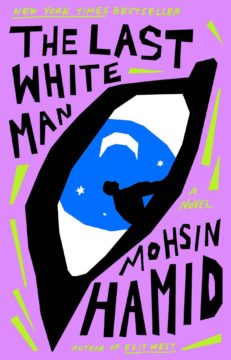 The anonymous setting of Mohsin Hamid’s 2022 novel The Last White Man brings with it a certain comfort. The British Pakistani author’s lack of specificity is purposeful: dropped into a nameless town in an unknown country, the reader has no cultural touchstones to grab onto, no societal baggage to carry. The blank slate leaves just one aspect to focus on, which Hamid homes in on with his first line: “One morning Anders, a white man, woke up to find he had turned a deep and undeniable brown.” This succinct statement of fact — a rarity in the novel — establishes the binary law of the land: you’re either white or dark, no in-between.
The anonymous setting of Mohsin Hamid’s 2022 novel The Last White Man brings with it a certain comfort. The British Pakistani author’s lack of specificity is purposeful: dropped into a nameless town in an unknown country, the reader has no cultural touchstones to grab onto, no societal baggage to carry. The blank slate leaves just one aspect to focus on, which Hamid homes in on with his first line: “One morning Anders, a white man, woke up to find he had turned a deep and undeniable brown.” This succinct statement of fact — a rarity in the novel — establishes the binary law of the land: you’re either white or dark, no in-between.